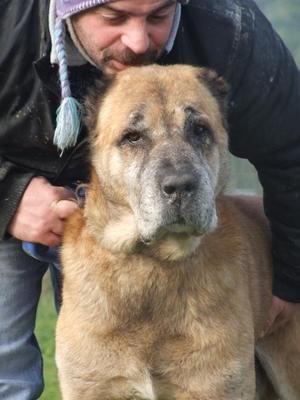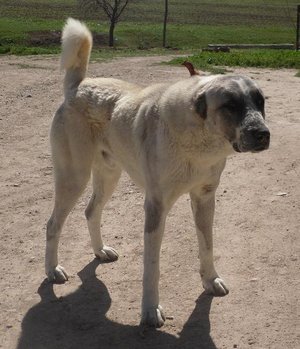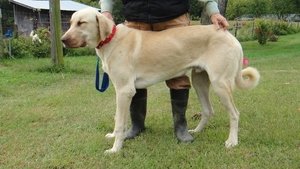Breed Standard
Learn the breed standard for the Turkish Boz Shepherd. Weight, height, conformation, coat length, color, skull and bone structure, musculature and function - it's all included!
Turkish Boz Shepherd Dog Breed Standard
GENERAL APPEARANCE
Male Turkish Boz Shepherds have a square profile and majestic appearance. Notice the balance of structure, size, power, and athleticism.
The Turkish Boz Shepherd Dog exemplifies an unparalleled versatility in function and devoted loyalty to his work and family. Majestic in appearance, he is the embodiment of strength, giant size, keen intelligence, and confidence, as well as a gentle, perceptive family companion. A powerful and athletic breed, he is well-muscled and agile, with tremendous endurance and speed. His profile is square to slightly rectangular and lean; his proportion is always balanced so as to not appear excessive or extreme. He has a heavy, balanced bone structure with a moderate to deep chest, strong head, and feet large for his size. Developed by the necessity for healthy, sound, and effective livestock guardians, the Turkish Boz Shepherd moves with both purpose and fluidity, and should always present as a bold and capable defender that is submissive, calm, and loving to family and others who do not pose a threat.
Female Turkish Boz Shepherds typically have a more rectangular profile than males, but overall balance is key.
The body is balanced, functional, and proportioned, without appearing extreme or exaggerated. The chest should be broad, moderately deep, and well-muscled. The ribs are well sprung with the abdomen up tucked to exemplify the dog's ability to run at great speeds and distances. A narrow, shallow chest or barrel ribs are outside the standard. All parts of the body are firm, well-muscled, and lean. It is not uncommon to see the definition of the ribs, as the Turkish Boz Shepherd is a working breed he should carry minimal additional weight.
The tail reaches the hock and, at rest, falls straight downward, with a very slight up-curl at the end. When alert or running, the tail is held upright in an accentuated, curled position over the back, parallel with the spine. The hair on the tail is of roughly the same density and length as that on the body. Tails resembling plumes (excessively long hair) or sparse hair density, as well as a straight, or excessively long or short tail, is outside breed standard.
SIZE, PROPORTION, SUBSTANCE
The balance of size, power, function, and overall appearance of the Turkish Boz Shepherd is of primary importance.
From Right to Left: Imparator Boz (male), Berivan (female), and their daughter Senge. Notice the diverse range of structure and appearance within the Boz as a result of their history as a Regional Landrace Variant.
Size - All Turkish Boz Shepherds should exhibit the giant and impressive size of the breed. The height at the withers averages 32" to 40 inches for dogs and 29 to 35 inches for bitches. Weights average 140-250 plus pounds for dogs and 100-170 pounds for bitches. The largest we are aware of was Minik a 42 inch male that was a lean 275#
Proportion - The Turkish Boz Shepherd dog is more massive and powerful, both in physical size and appearance, than the bitch. The height-to-length ratio in males is 1:1 to 1:1.2, while a slightly higher ratio is acceptable for bitches, providing she remains proportionate and balanced.
Substance - the Turkish Boz Shepherd should appear lean and agile yet solid and substantial. He is a dog of medium to slightly heavy substance whose muscling and bone structure should be balanced with the frame. Dogs too heavily or too lightly boned to be in balance with their frame are considered undesirable. Bitches should retain a sense of femininity independent of size.
HEAD
Correct head and expression are essential to the breed. The head of the Turkish Boz Shepherd should always be in balance with his size and bone structure, and the cranial notch to the nose should be approximately 35-40% of his shoulder height. The head is noble, strong without coarseness, and slightly rectangular, but above all, not fine or blocky; an overly delicate bone structure and overly broad mastiff-like head with strongly pronounced stop are outside the standard. The expression should be intelligent and confident, yet kind and soulful toward his family.
Example of Turkish Boz head and proportion. Notice the skull size and balance; neither too broad or wide, nor too narrow or rounded.
Eyes are medium in size, non-protruding, range in color from honey yellow to dark brown, and are almond-shaped. Eyes are set at an angle of 45 degrees to the plane of the head on profile. Eye rims and lids are tight; loose eyelids/rims or protruding eyes are highly discouraged.
Ears are V-shaped, rounded at the apex, and set no higher than the plane of the head. Ears are medium in size, carried flat to the head and wide at the base, with a length sufficient to cover the eye if pulled forward. The historical practice has been to crop the ears to a medium, rounded, bear or lion-like appearance to prevent the ears from being a safety or health risk in confrontations with predators. It is still encouraged that Turkish Boz Shepherds used as livestock guardians in large-prey areas have their ears cropped for the dog's safety. Ears overly cropped to produce an intimidating, harsh appearance are outside breed standards and highly discouraged. Both cropped and natural ears are accepted.
The muzzle is long, proportionate to the head in structure, and strong. The muzzle is "squared" both from the profile and front views, creating a slightly blocky, substantial appearance.
The nose typically is solid black and standard, although solid liver noses are also accepted.
The jaws are robust and powerful, yet narrow in width with 42 teeth, 20 upper and 22 lower, which are strongly developed and meet in a scissors bite with little space. Any variance from a scissors bite is undesired. Lips are pendulous and fully cover teeth but should not hang excessively; the Turkish Boz Shepherd is generally considered a dry-mouth dog, and excessive lip or jowl is outside breed standard.
NECK, TOPLINE, BODY
The neck should be of proportionate length to the body, slightly arched, well-muscled and powerful. The underline should be clean with minimal dewlap. Weak or delicate necks are undesired. The top line will appear level when gaiting.
FOREQUARTERS
The forequarters, when viewed in profile, should be strong, muscular, and well-developed. The shoulder should be broad and sloping. Right angles are formed by both the shoulder blade in its articulation with the upper foreleg and by the line formed from the upper tip of the shoulder to the back of the elbow joint. The ligaments and muscles attaching the shoulder blade to the rib cage must be well-developed for function and speed. The Turkish Boz Shepherd possesses flexibility in his shoulders that appears unnatural.
The forelegs are relatively long, well-boned, well-muscled, parallel, and proportionate to the frame. When viewed in profile, the forelegs are directly under the withers, straight, and vertical to the ground.
Elbows are set in a straight line from the point of the shoulder to the wrist, pointing directly to the rear, neither being turned in our turned out. The feet are very large, with strongly webbed toes and well-arched. The pads are thick, dark in color, and firm, with stout, short nails.
HINDQUARTERS
The hindquarters should be strong, broad, muscular, and well-angled. Viewed from the rear, the hocks are parallel and straight to the ground, and the hind legs are relatively long, well-boned, well-muscled, and proportionate to both the forelegs and the overall frame. Hind legs are powerful with a moderate stifle angulation. Double dew claws may exist.
A prime example of a Turkish Boz Shepherd male; notice size, balance, musculature, and structure.
COAT
The coat is short to medium in length, dense, and has a seasonal distinction. In warmer temperatures or seasons, the coat is short and coarse with less density. In the winter, a soft, very dense undercoat with softer and longer guard hair will grow. Hairs on the ears, face, and head are very short, whereas hairs on the neck and mane, especially in males, are thicker and longer. The Turkish Boz Shepherd will shed heavily at least twice a year.
COLOR
The ranges of acceptable color in the Turkish Boz Shepherd include white, red, and grey, with fawn and cream being more easily recognized. Brindle and Black Boz are found but are much less common. Irish or Pinto can be present with any of the colors. All acceptable colors may exist in any combination, but coat color is typically a gradient blend based on one predominant color, fawn and cream being the most common. The presence of a black mask and ears is common, but a red mask and ears or lack of mask altogether are also accepted in the standard. White color markings should be limited to the muzzle close to the nose or chin, feet, and forelegs, with white spots limited to the chest only. A reverse facial coloring mask may also be present without fault.
Below is a gallery of Turkish Boz Shepherds that exemplify the diversity within the breed.
GAIT AND FUNCTION
The Turkish Boz Shepherd should exemplify the optimal balance of speed, agility, and power, instantaneously reacting to a threat with both speed and ferocity for the purpose of defense. The gait of the Turkish Boz Shepherd is one of strength and power and should carry a natural fluidity and springiness. Pacing is not considered normal or desirable in the breed. The Turkish Boz Shepherd is able to obtain speeds of 27 – 35 miles per hour on average, some reaching as fast as 40 miles per hour, and can run great distances, some employing a double suspension gallop. His agility is surprising for his size, with the ability to pivot and change direction at rapid intervals at various speeds. The backline should remain nearly level with little rise or fall except at very high speeds (double suspension gallop).
TEMPERAMENT
The Tukish Boz Shepherd transitions easily when socialized appropriately. Both Boz Shepherds (left and far right) are calm and accepting of complete strangers and of other well-socialized dogs.
The Turkish Boz Shepherd is foremost a guardian dog: calm, intelligent, and observant, yet alert and perceptive. He is highly adaptable to varied climates and changes in settings. Ever aware of his surroundings, even when seemingly asleep, the Turkish Boz Shepherd will instinctively and promptly defend his family, property, or livestock. His power, independence, and intelligence must be realized and respected; proper socialization is a must. Fundamentally, he is a very sensitive dog that requires a loving owner and family. A soft hand in correction is essential, as harsh treatment or correction can create long-term insecurity and behavioral issues. Personal and purposeful relationships are necessary, either human or animal; isolation for long periods is not tolerated well by this breed. He will remain devoted, loyal, and submissive to his owner and family and accept strangers with proper introduction. The Turkish Boz Shepherd is intelligent and has a keen ability to evaluate a situation and react with a measured response; his perceptiveness to his owner's level of comfort contributes to his reaction in given situations. Calm and seldom nervous, the Turkish Boz Shepherd is serious and clever, comfortably tolerating boisterous activity and exuberance from children and livestock. The Turkish Boz Shepherd is extremely versatile in function, working in both rural and suburban applications within a range of settings and performance expectations. His intelligence, calm and alert demeanor, and perceptiveness make him extremely effective in a multitude of environments.
LIFESPAN AND HEALTH
The Turkish Boz Shepherd has an average lifespan of 10-15 years. Although health diseases and conditions are limited in breed, incidences of the elbow and hip dysplasia have been reported. The Turkish Boz Shepherd does not suffer from most of the common health conditions known to plague the giant breeds.
DISQUALIFICATIONS
Overly aggressive temperament; aggression or predation with livestock.
Lack of function with regard to speed of running and agility.
Disproportionate head to body; overly delicate or blocky head.
Overly cropped ears or cropped tails.
Extreme overshot or undershot bite; excessive lips or jowls.
Bone structure is overly fine or heavy to negatively affect overall balance and/or function.
Narrow or shallow chest; barrel ribs.
The Turkish Boz Shepherd Breed Standard is maintained by World Anatolian Dogs, also known as W.A.D. This Turkey-based Registry is responsible for judging and registering the dogs as Turkish Boz Shepherd Dogs.
The Turkish Dog Federation does not create or maintain the Breed Standards. The official breed standard can be found at www.turkishdog.com. TURKISH DOG FEDERATION INC. – Turkish dog phenotype descriptions, pedigrees, and breeders.
For further questions, please get in touch with Jesika VanFossen at 785-640-9199
INFORMATION, ERRORS, AND OMISSIONS DISCLAIMER: The information provided herein is supplied in good faith based on information which we believe, but do not guarantee, to be accurate or complete; however, we are not responsible for the errors or omissions that may occur. The information presented on this website is subject to change without notice.
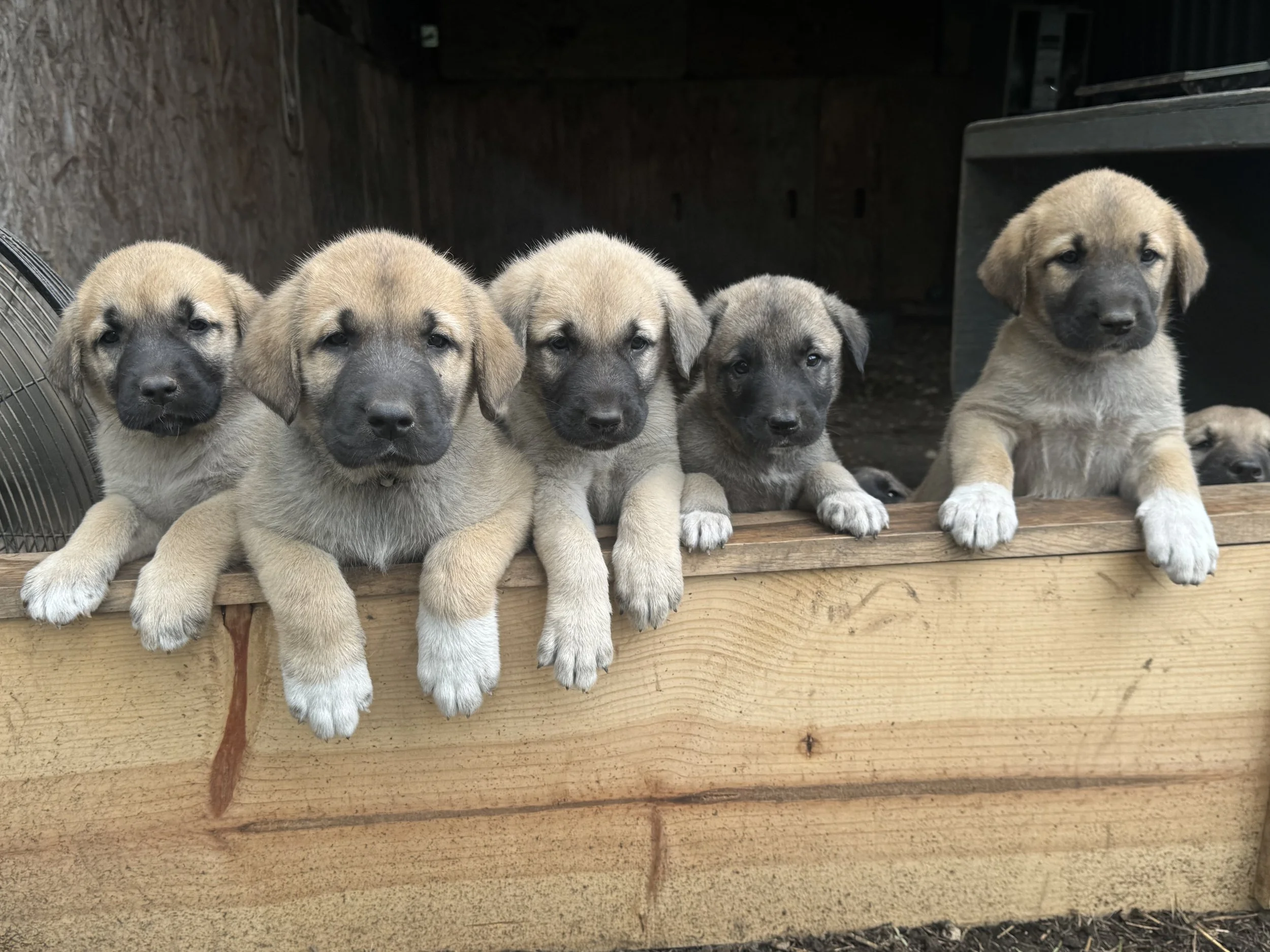
![IMG_8841[1].JPG](https://images.squarespace-cdn.com/content/v1/5040d091e4b0b97fe5a4ad61/1635869588648-2T674TH05KHV4VDPNURQ/IMG_8841%5B1%5D.JPG)
![IMG_8095[1].JPG](https://images.squarespace-cdn.com/content/v1/5040d091e4b0b97fe5a4ad61/1635869631363-VTZZ2QOORAWUDNOMCE5E/IMG_8095%5B1%5D.JPG)
![IMG_8846[1].JPG](https://images.squarespace-cdn.com/content/v1/5040d091e4b0b97fe5a4ad61/1635869734836-2TQJUHESV9HLDTVUHX00/IMG_8846%5B1%5D.JPG)
![IMG_E8149[1].JPG](https://images.squarespace-cdn.com/content/v1/5040d091e4b0b97fe5a4ad61/1635869928371-AJDUMQIQT8SFVR08VETT/IMG_E8149%5B1%5D.JPG)
![IMG_8879[1].JPG](https://images.squarespace-cdn.com/content/v1/5040d091e4b0b97fe5a4ad61/1635870080207-1NR92EZV7AXQ3OYFVR6V/IMG_8879%5B1%5D.JPG)
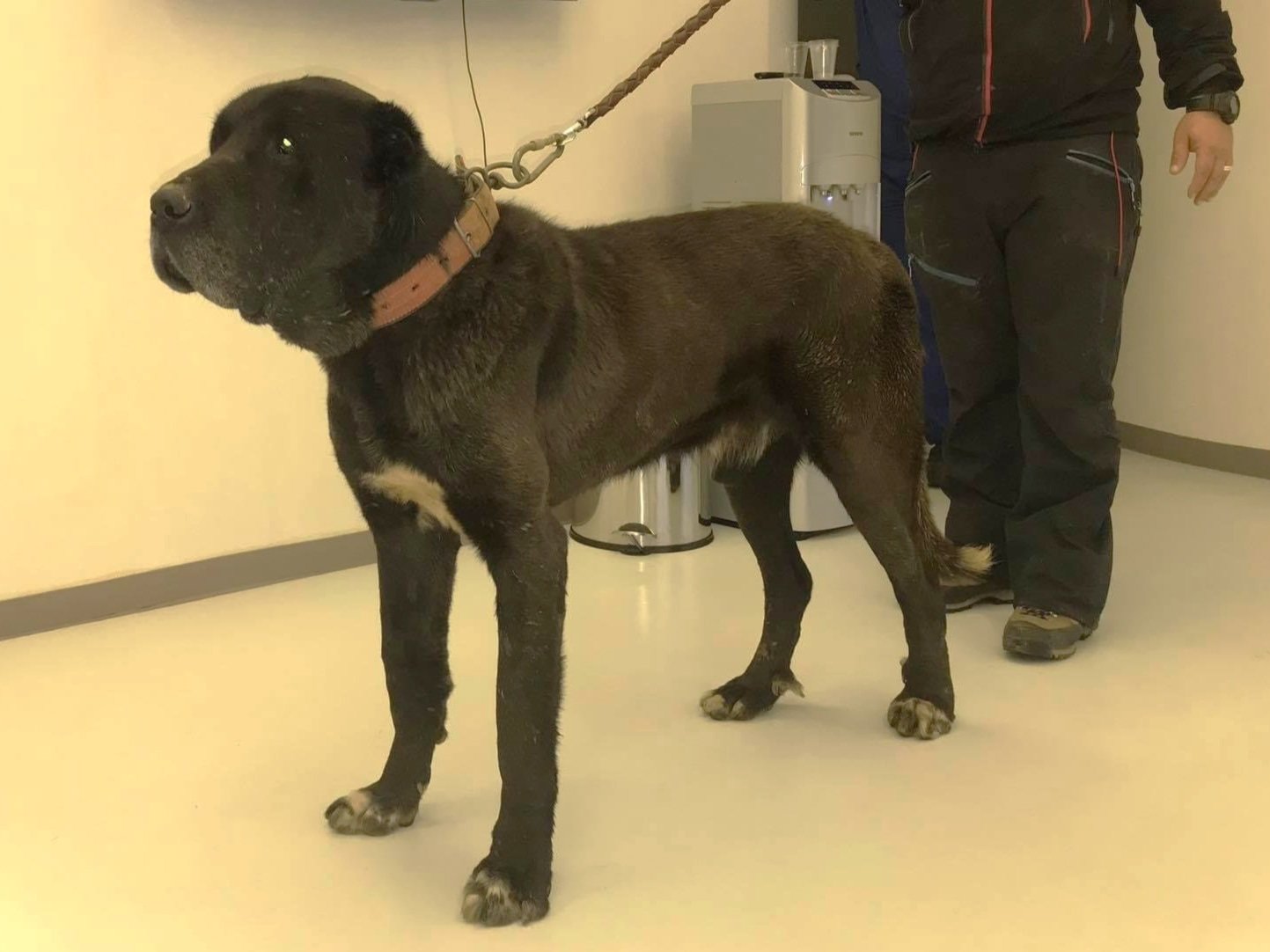
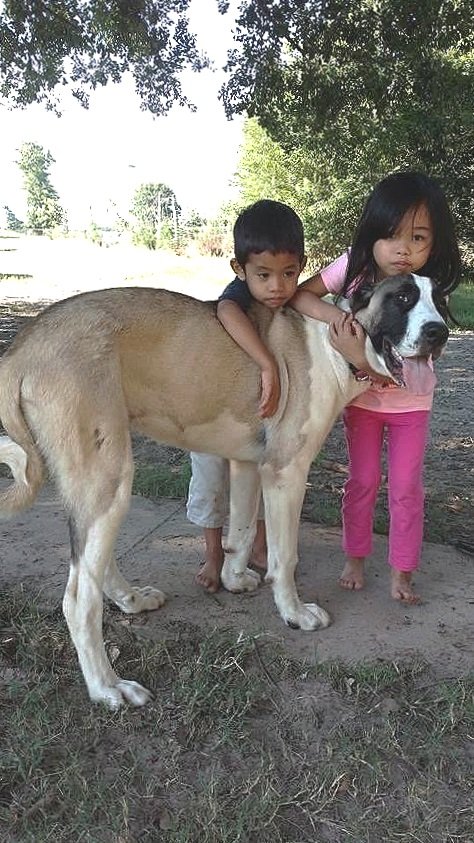
![IMG_8133[1].JPG](https://images.squarespace-cdn.com/content/v1/5040d091e4b0b97fe5a4ad61/1635870775815-0W5XOJWH5PZ9GD87NTYH/IMG_8133%5B1%5D.JPG)
![IMG_8861[1].JPG](https://images.squarespace-cdn.com/content/v1/5040d091e4b0b97fe5a4ad61/1635871102529-X6NENVXEW9VP74NAQ452/IMG_8861%5B1%5D.JPG)
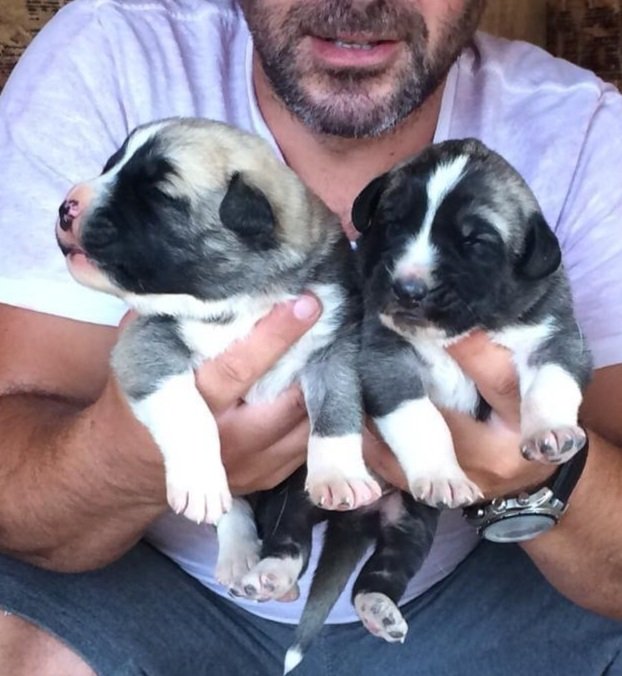

![IMG_8832[1].JPG](https://images.squarespace-cdn.com/content/v1/5040d091e4b0b97fe5a4ad61/1635871931412-EZGS0QG8MAKB70JL63I0/IMG_8832%5B1%5D.JPG)
